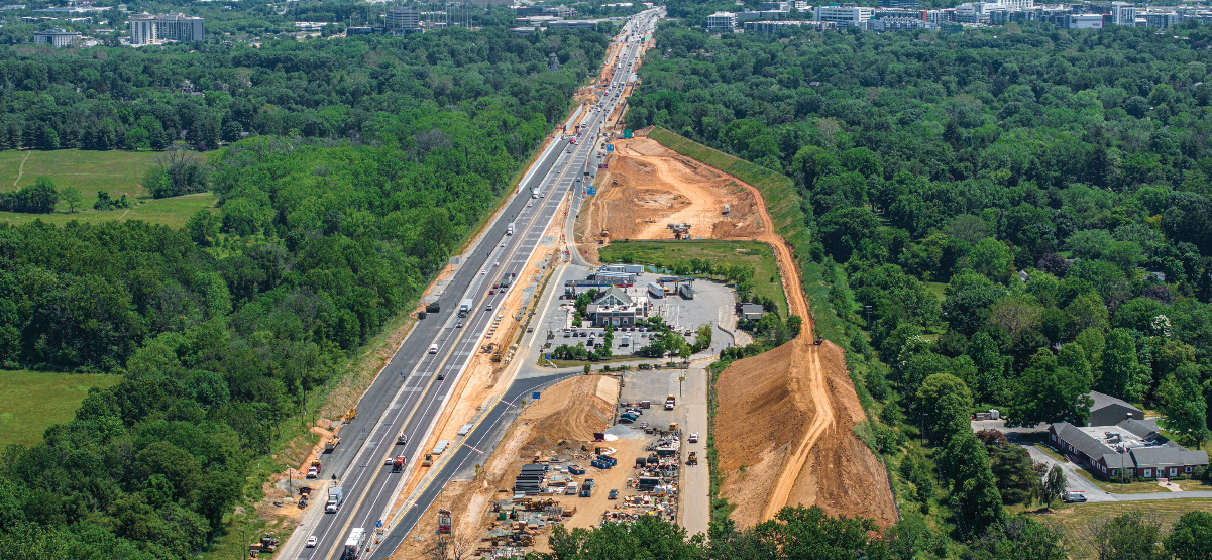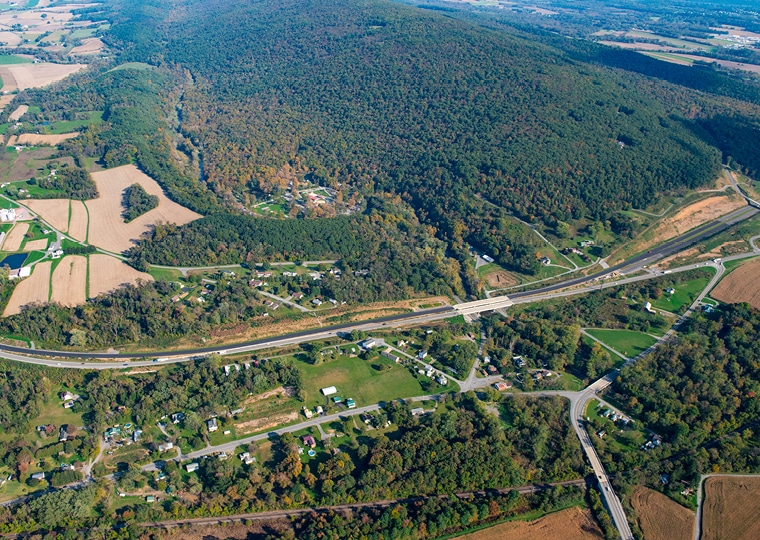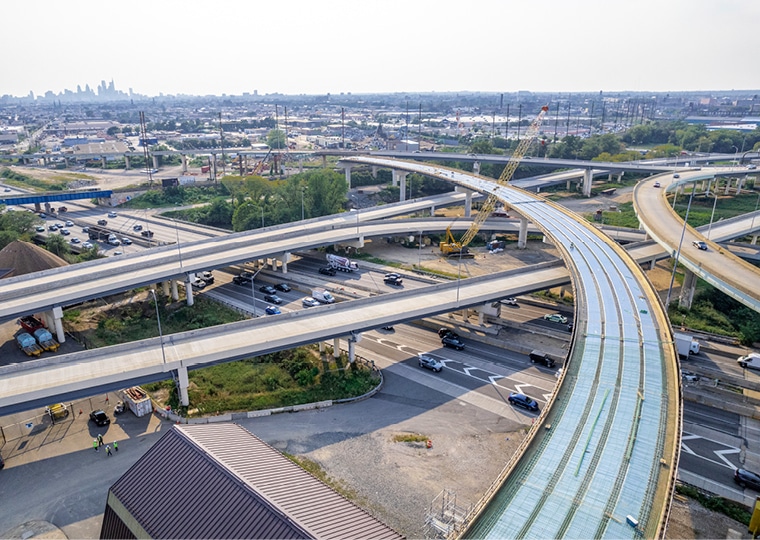At over 80 years old, the Pennsylvania Turnpike is undergoing a $7 billion capital investment program to reconstruct a highway system relied upon by more than 500,000 daily customers.
Along one of its most heavily traveled sections – connecting popular destinations such as King of Prussia Mall and Valley Forge National Historic Park – STV’s design team is partnering with the Pennsylvania Turnpike Commission (PTC) to develop design solutions that will enhance the roadway and address complex geotechnical site conditions.
STV is the lead designer for the reconstruction and widening of two miles of the turnpike between mileposts 324 and 326 in Tredyffrin Township, Chester County, the most heavily traveled four-lane section of the east/west mainline Turnpike, according to the PTC.
STV’s design of the roadway reconstruction included converting the existing four-lane roadway, median, and shoulders into six lanes with three 12-foot travel lanes in each direction, a 26-foot median, and 12-foot-wide shoulders. The team also designed three bridge replacements that carry the turnpike over two local roads and US 422, culvert extensions, stormwater management facilities, and multiple sound barriers.
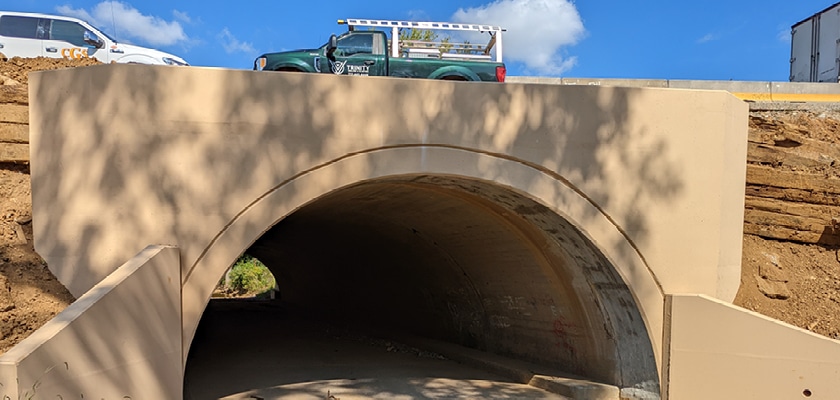
The project’s unique site conditions proved particularly complex during the design phase. Situated near Valley Creek and Trout Creek, the area features Karst geological conditions. These underground limestone formations are soluble rock, which are prone to sinkhole development.
“Storms and heavy rains frequently cause the creeks’ watersheds and local streams to overflow and flood area roads—all of which the turnpike crosses over,” said Robert Schoenen, P.E., senior project manager at STV. “Our design team navigated state and local township requirements to develop a new stormwater management system that was consistent with the project’s needs and required watershed criteria.”
The firm also conducted extensive subsurface geological investigations to develop the best type of stormwater basin for each area’s particular conditions.
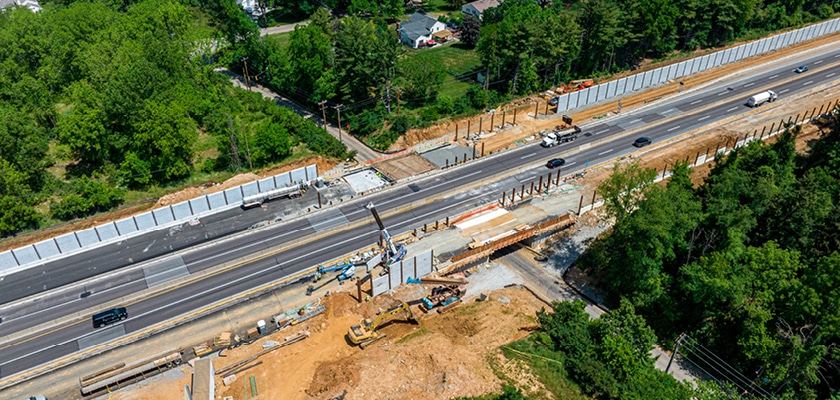
“With the expanded vehicle traffic carrying capacity implemented with this section, the PTC also tasked our team with designing sound barriers following federal and state guidelines, which will reduce traffic noise for many residents along the Turnpike,” Schoenen said. “The PTC involved the adjacent local community in determining the barrier’s aesthetic features on the resident side of the barrier, including color and texture, which were incorporated into the final design.”
The design team collaborated closely with the firm’s environmental scientists to develop a design that minimized impacts on the nearby wetlands and streams. To that end, retaining walls were integrated into the culvert designs for stream crossings, limiting temporary and permanent stream impacts.
Construction is currently underway along the section, as is the installation of sound walls. The PTC anticipates the project to be completed in summer 2025.
